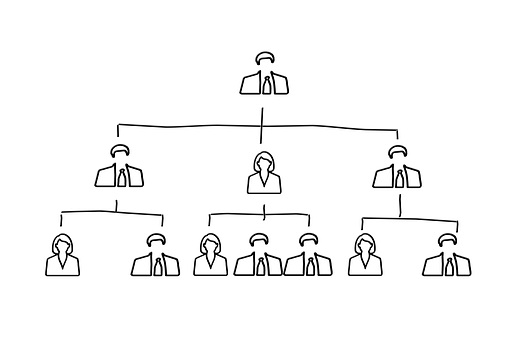Managing costs is a critical challenge for healthcare organizations, and it’s not just limited to the bottom line. In an industry where patient care is paramount, it’s essential to strike a balance between cost containment and quality of care. And that’s where HR strategies come into play. A well-crafted HR strategy can help healthcare organizations reduce costs while maintaining or even enhancing patient care.
However, developing such a strategy can be a daunting task, especially in an industry where regulations and compliance requirements are constantly evolving. That’s why we’ve put together the ultimate guide to HR strategies for cost containment in healthcare. We’ll cover everything from recruitment and retention to employee benefits and compensation, and how to balance these factors with cost containment goals.
Whether you’re a healthcare administrator, HR professional, or simply interested in the healthcare industry, this guide is a must-read for anyone looking to optimize HR strategies for cost containment in healthcare.
The Importance of Cost Containment in Healthcare
Healthcare costs have been increasing at an alarming rate, and it’s not just the cost of medical procedures or equipment that’s driving up expenses. Labor costs, including salaries, benefits, and training, are a significant factor in healthcare budgets. In fact, labor costs account for over 50% of the average hospital’s operating expenses. With shrinking reimbursements and increasing competition, healthcare organizations must find ways to contain costs while maintaining quality care.
Cost containment in healthcare is not just about reducing expenses; it’s about optimizing resources and improving patient outcomes. When healthcare organizations can manage costs effectively, they can invest in new technologies, facilities, and programs that benefit patients. The goal of cost containment is not to compromise patient care but to find ways to provide high-quality care efficiently.
HR Strategies for Cost Containment in Healthcare
HR strategies play a critical role in cost containment in healthcare. The following are some HR strategies that healthcare organizations can implement to help reduce labor costs without sacrificing quality care:
Understanding Labor Costs
The first step in developing an effective HR strategy for cost containment is to understand healthcare labor costs. This includes salaries, benefits, training, and other expenses associated with employees. By analyzing labor costs, healthcare organizations can identify areas where they can reduce expenses without compromising patient care.
Every HR professional needs to “own” the labor costs of the organization. This should not be left to the CFO. If you are to be the expert in the utilization and management of the human resources of the organization, you must be literate in healthcare labor costs.
A good start on understanding productivity can be found here.
Analyzing Labor Data for Cost Savings
Once healthcare organizations have a better understanding of the labor costs associated with their workforce, they can analyze labor data to identify opportunities for cost savings. For example, analyzing employee productivity data can help organizations identify areas where they can increase efficiency and reduce the need for additional staff.
HR should also “own” the analysis of labor data. Of course every line manager should be responsible for his/her/their area but HR should work with managers in understanding what the data is saying and identifying areas for improvement.
Best Practices for Healthcare Staffing
Staffing is a critical component of healthcare operations, and effective staffing practices can help healthcare organizations reduce labor costs. One best practice is to implement flexible staffing models that allow healthcare organizations to adjust staffing levels based on patient demand. Cross-training employees can also help organizations optimize staffing levels and reduce labor costs.
How can HR assist the departments in reducing agency/traveler professionals? Healthcare organizations have a large dependence upon these expensive staffing resources.
Implementing Employee Wellness Programs
Employee wellness programs can help healthcare organizations reduce healthcare costs associated with employee illness and absenteeism. By promoting healthy lifestyles and providing resources for employees to manage their health, healthcare organizations can help reduce healthcare costs and improve employee productivity.
Reducing Employee Turnover
High employee turnover rates can be costly for healthcare organizations. Recruiting and training new employees is expensive, and turnover can also affect patient care. To reduce turnover rates, healthcare organizations can implement retention strategies such as offering competitive salaries and benefits, providing opportunities for career advancement, and creating a positive work environment.
Tips for Effective Healthcare Employee Training
Employee training is essential in healthcare, but it can also be expensive. To optimize training costs, healthcare organizations can implement e-learning programs, cross-training programs, and on-the-job training. By providing employees with opportunities to learn and grow, healthcare organizations can improve employee satisfaction and retention.
Opportunity for growth is high on the list of what healthcare professionals want. Don’t limit your programs. Replace tuition reimbursement programs with education reimbursement programs. Consider reimbursement for seminars, workshops, CEU programs, etc.
The Role of Technology in Healthcare Cost Containment
Technology can play a significant role in healthcare cost containment. Electronic health records, for example, can help healthcare organizations reduce administrative costs and improve patient care. Telehealth programs can also help healthcare organizations reduce costs associated with patient transportation and hospital stays.
Hybrid work models also can impact organization costs. HR needs to be leading and not following in adapting staffing models and support to changing work environments.
Conclusion
Cost containment is a critical challenge for healthcare organizations, but it’s also an opportunity to optimize resources and improve patient outcomes. HR strategies play a critical role in cost containment, and healthcare organizations can implement a variety of HR strategies to reduce labor costs without sacrificing quality care. By understanding labor costs, analyzing labor data, implementing best practices for staffing, providing employee wellness programs, reducing employee turnover, and providing effective employee training, healthcare organizations can optimize their HR strategies and achieve cost containment goals. With the right HR strategies in place, healthcare organizations can provide high-quality care more efficiently, benefitting both patients and the bottom line.





